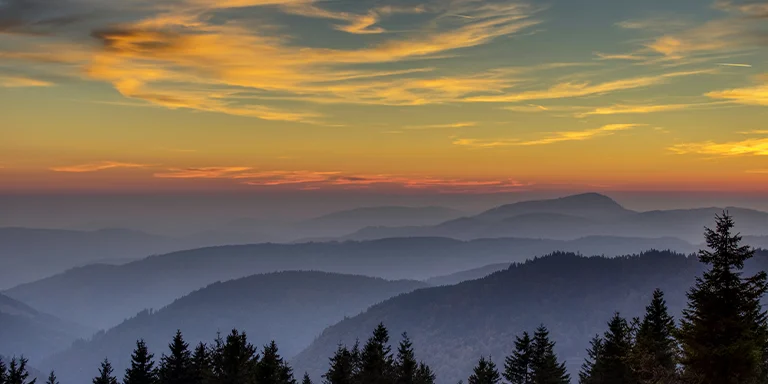
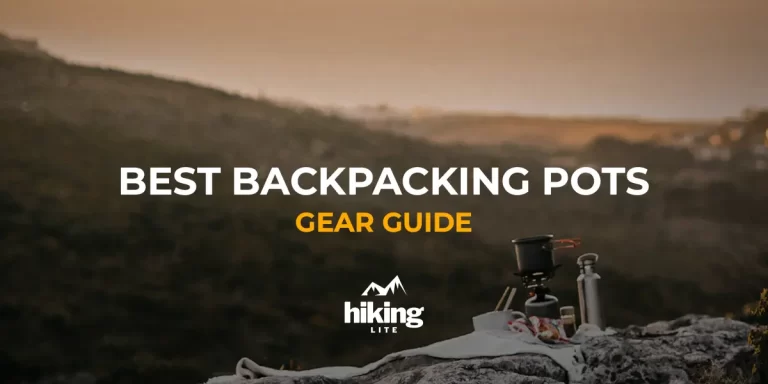
Choosing your backpacking pot is an important decision that will impact many of your outdoor adventures in the years to come.
While the market offers numerous options, navigating the various trade-offs between weight, durability, capacity, and other factors can feel overwhelming.
Our goal is to simplify this process and help you identify the portable cooking vessel that best suits your specific backpacking needs and deserves a spot in your backpack.
In this guide, we’ll provide key insights into some of the most popular lightweight pot options.
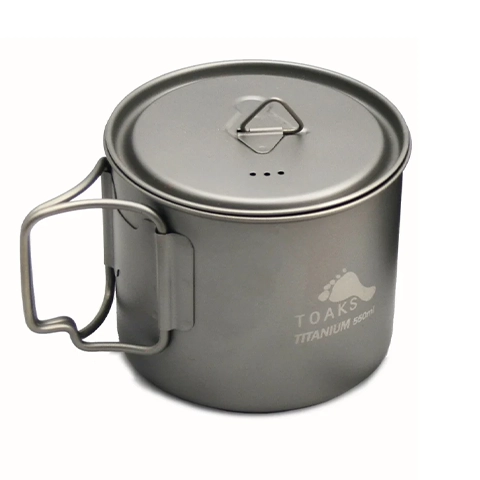
Key Specs
Weight: 2.54 ounces (72 grams)
Material: Titanium
Capacity: 18.6 fl. oz. (550ml)
Price: $$
PROS
✅ Ultralight
✅ High quality
CONS
❌ Not the largest option
The TOAKS LIGHT Titanium 550ml Pot is a fantastic choice for lightweight backpacking cooking. With its compact size and ultra-lightweight design, it’s perfect for solo adventurers or as an addition to a larger cooking setup. Weighing just 2.54 oz with the lid, it’s easy to carry and use.
The pot’s smart dimensions provide stability on various stoves, and its versatility shines through whether you’re boiling water for yourself or sharing a cup with a companion. The lid’s practical features ensure safe handling, while its holes help monitor boiling.
And for those seeking more options, a simple modification can enable hanging over a fire. All in all, this pot’s durability and adaptability make it a top choice for outdoor cooking enthusiasts.
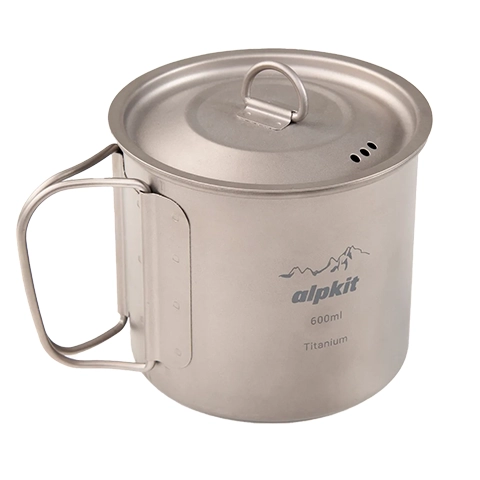
Key Specs
Weight: 4.23 ounces (120 grams)
Material: Titanium
Capacity: 20.28 fl. oz. (600ml)
Price: $$
PROS
✅ High quality
✅ Fits a small gas canister inside
CONS
❌ Might be hard to source
The MytiMug 600 from Alpkit stands out as an excellent option for those seeking lightweight backpacking and bikepacking experiences. Crafted from a blend of robust yet lightweight titanium, it holds the perfect size for solitary journeys. Boasting a capacity of 20.28 fl. oz. (600ml), it excels at heating water for dehydrated meals, and it can even accommodate a gas canister.
Its collapsible handles and pragmatic features, such as the lid vent and measuring lines, contribute to its intelligent and user-friendly design. Alpkit’s titanium cookware has consistently demonstrated its resilience and effectiveness over our years of use.
This choice is unparalleled for open-air cuisine, characterized by its absence of metallic aftertastes, and supported by Alpkit’s 3-year Alpine Bond guarantee.
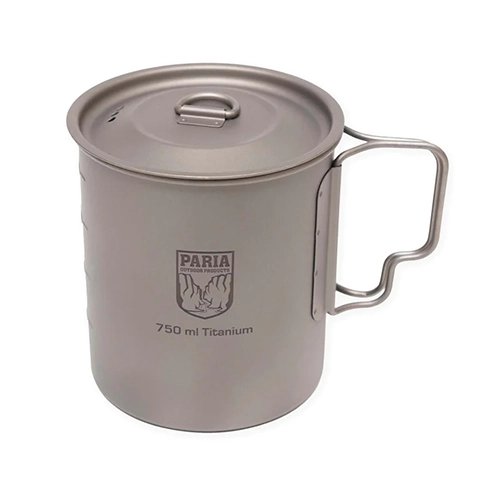
Key Specs
Weight: 4.80 ounces (136 grams)
Material: Titanium
Capacity: 25.36 fl. oz. (750ml)
Price: $$
PROS
✅ High quality
✅ Double-wall insulation
CONS
❌ Handles can get hot
The titanium pots from Paria Outdoors provide a wonderful start to your camping and backpacking mornings with a warm cup of coffee or tea. Their double-wall insulation keeps your drink cozy, and the pot itself stays comfortably warm to touch.
These pots bring a pleasant surprise with their smart lid design and secure fit. The lid, which fits snugly, is compact and secure, and you can even use the included stuff sack to keep things neat.
Just a heads-up, though: the handles can get quite hot when you’re using them. With these pots, Paria shows their dedication to making outdoor gear that enhances your adventures.
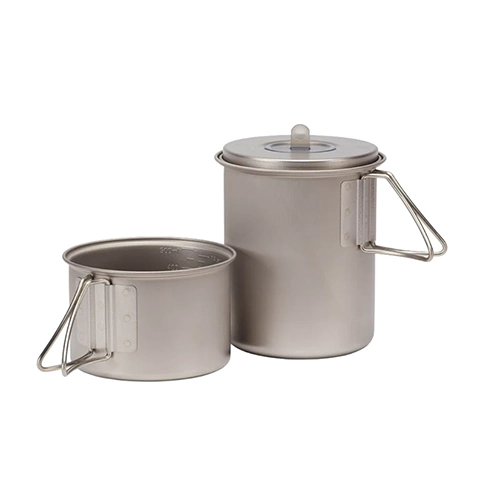
Key Specs
Weight: 6.7 ounces (190 grams)
Material: Titanium
Capacity: 17.58 fl. oz. + 28.74 fl. oz. (520ml + 850ml)
Price: $$$
PROS
✅ High quality materials
✅ Larger size
CONS
❌ Expensive
The Snow Peak T-Mini Solo Combo provides an excellent answer for cooking while backpacking light. Made from strong Japanese titanium, it features a camping cup and pot that neatly fit inside each other for simple storage.
We can admire its compactness and lightweight design. It securely accommodates a double-wall cup and stove, giving you a tidy arrangement. While the cost might make you think, the usefulness makes it worth the expense.
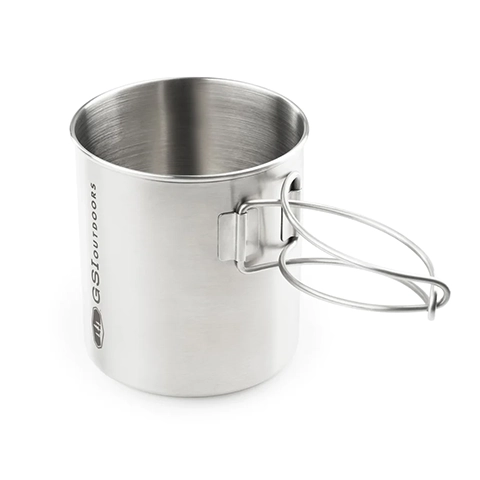
Key Specs
Weight: 8 ounces (226.8 grams)
Material: Stainless steel
Capacity: 24 fl. oz. (710ml)
Price: $
PROS
✅ Extremely affordable
✅ Smaller size avaliable (4.9oz/139g)
✅ Great warranty
CONS
❌ Not the fastest boiling option
The GSI Outdoors Stainless Bottle is a versatile choice for your outdoor escapades. This stainless steel cup pulls double duty as a cooking pot, perfect for preparing meals and sipping hot drinks.
Our tests highlight that its sturdy stainless steel build guarantees extended durability. While it might not be the quickest at boiling water because of its material, it still performs well.
All in all, GSI Outdoors offers a reliable and budget-friendly option for ultralight backpacking cookware. This underscores their commitment to providing quality and lasting gear for your outdoor journeys.
There are a few main factors to consider when selecting backpacking cookware:
Pots
Backpacking pots are considered the most versatile and beloved option for backpackers. Their compact, lightweight design makes them ideal for solo or small group trips. The handle design should be collapsible for improved packability.
Pans
Versatile backpacking pans allow for both cooking and easy cleanup. However, they may weigh more than dedicated pots. The handle design should be collapsible for improved packability.
Heat-Exchanger Pots
Jetboil-style systems, also called heat-exchanger pots, offer efficient boiling but require fuel canisters and are more expensive and bulky to pack.
Material
Consider your intended use, group size, and max weight when deciding between these options. Choosing based on material priorities like weight, durability and budget will ensure you pick the best piece of cookware for your backpacking needs.
If you’re keen on learning more about selecting backpacking cookware, explore our in-depth post to become an expert.
Using a backpacking pot directly on a campfire might seem possible, but it’s generally not a good idea. Backpacking pots are usually made from lightweight materials like aluminum or titanium, which can melt or burn if placed directly in flames. A safer choice is to use a grilling grate or ring to lift the pot above direct contact with the fire. This way, the pot can absorb conducted heat without touching the flames. You can also place hot coals or wood around and under the pot to allow it to simmer gently. Just be careful not to let the fire get too hot. Keep a close eye on the pot and adjust things as needed to avoid any damage. With some caution, backpacking pots can be successfully used over a campfire.
Some backpacking pots come with non-stick surfaces for easier cooking. Well-known brands like MSR, GSI Outdoors, and Sea to Summit offer pots with these coatings, making food release and cleanup a breeze. However, it’s important to note that non-stick surfaces are not as durable as uncoated aluminum or stainless steel. The coating can scratch and wear off over time, especially if you use metal utensils. To care for non-stick pots, it’s best to use gentle silicon or plastic utensils and clean them after each use without scrubbing. While non-stick pots add convenience, they might not be as long-lasting as uncoated options. Backpackers should weigh the pros and cons to decide if the trade-off is worth it for their needs.
When choosing a backpacking pot, base your decision on your specific needs. Consider group size and what you’ll cook – dehydrated meals, freeze dried, or fresh. Solo hikers can get by with a 0.5 – 1 liter pot. Groups of 2 need 1.5 – 2 liters. Larger groups will need 2 – 3 liters. Also factor in pot dimensions – wider pots allow stirring and evaporation but are bulkier. Tall narrow pots take less pack space but can boil over easily. Make sure your stove properly supports the pot size too. Prioritize weight, packability, durability and any features you need. Don’t oversize your pot – additional capacity requires more fuel. Find the smallest, lightest pot to comfortably cook your intended meals.